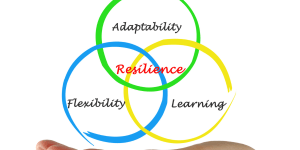In an era defined by rapid technological advancements and an overwhelming influx of information, the ability to prioritize effectively has become a crucial skill for success. Many individuals find themselves caught in a whirlwind of tasks, deadlines, and distractions, making it increasingly difficult to discern what truly matters. The challenge of prioritization is not merely a matter of personal efficiency; it directly impacts productivity, mental well-being, and the achievement of long-term goals.
🎯 In a Nutshell
- ✅ Clarify your goals to understand what truly matters
- ✅ Use frameworks like the Eisenhower Matrix to separate urgent from important
- ✅ Focus energy on tasks that directly impact your long-term success
- ✅ Break large projects into clear, actionable steps to avoid overwhelm
- ✅ Plan daily priorities with intentional time-blocking to maximize focus
- ✅ Regularly review and adjust your priorities based on progress and changing demands
Master prioritization to work smarter, reduce stress, and achieve meaningful results faster!
Prioritization allows us to allocate our time and energy to the most significant tasks, ensuring that we focus on what aligns with our objectives and values. By mastering this art, we can reduce stress and prevent the paralyzing effect of decision fatigue—a common experience in today’s world where choices abound. The constant barrage of notifications, emails, and social media updates can easily derail our focus, leading to a fragmented work approach that hinders progress.
Moreover, effective prioritization fosters a sense of control and accomplishment. When we clearly define our priorities, we are better equipped to tackle our responsibilities, leading to improved outcomes in both personal and professional realms. This skill is not just about managing tasks; it’s about making conscious choices that reflect our aspirations and ambitions.
As we delve deeper into the intricacies of prioritization, this article will explore various strategies and techniques that can help individuals regain control over their time and enhance their productivity. By understanding the principles of prioritization, we can transform our approach to daily challenges, ultimately paving the way for success in our busy lives.
Understanding Your Priorities: Defining What Truly Matters
Self-reflection plays a pivotal role in understanding our priorities and identifying what truly matters in our lives. By engaging in this introspective process, we can uncover our core values—those guiding principles that shape our decisions and actions. Knowing our values is essential; it serves as a compass that directs us toward our long-term goals and helps us navigate the complexities of daily life.
To begin this journey of self-discovery, consider the following exercise: take a moment to list out the aspects of life that resonate most with you—these could include family, career, health, education, or personal growth. Once you have your list, narrow it down to five core values that reflect your beliefs. This clarity will not only aid in decision-making but also enhance your overall sense of purpose.
Next, to align your daily tasks with your overarching objectives, implement the SMART goal-setting framework. For instance, if one of your core values is health, a SMART goal might be: “I will exercise for 30 minutes, five days a week for the next three months.” This goal is specific (30 minutes of exercise), measurable (tracked via a fitness app), achievable (realistic within your schedule), relevant (aligns with your value of health), and time-bound (set for three months).
By integrating these actionable steps into your routine, you can ensure that your daily activities reflect your long-term aspirations. For example, if personal growth is a priority, you might set a goal to read one book related to your field each month. This approach not only fosters continuous learning but also reinforces your commitment to your values.
Through this process of self-reflection and goal-setting, you can create a life that truly aligns with what matters most to you, transforming your daily tasks into meaningful steps toward your future.
Effective Prioritization Techniques: Methods to Organize and Rank Tasks
When it comes to managing tasks effectively, several prioritization techniques can help individuals and teams focus on what is most important. Here, we explore three popular methods: the Eisenhower Matrix, the Pareto Principle, and the MoSCoW method, each with its unique approach to organizing and ranking tasks.
The Eisenhower Matrix
The Eisenhower Matrix categorizes tasks into four quadrants based on urgency and importance:
- Urgent and Important: Tasks that require immediate attention.
- Important but Not Urgent: Tasks that are significant for long-term goals but don’t require immediate action.
- Urgent but Not Important: Tasks that need quick action but do not contribute significantly to long-term objectives.
- Neither Urgent nor Important: Tasks that can be scheduled for later or delegated.
Example: A project deadline is approaching (urgent and important), while planning a future strategy (important but not urgent) can be scheduled for next week.
Strengths: This method helps in visualizing priorities and making informed decisions.
Weaknesses: It may oversimplify complex tasks and lead to neglecting those categorized as “not urgent.”
The Pareto Principle (80/20 Rule)
The Pareto Principle suggests that 80% of results come from 20% of efforts. This technique encourages focusing on the tasks that will yield the highest returns.
Example: In a sales context, identifying the top 20% of clients who generate 80% of revenue can help prioritize outreach efforts.
Strengths: It highlights the importance of efficiency and directs attention to high-impact activities.
Weaknesses: It may overlook the value of the remaining 80% of tasks necessary for overall success.
MoSCoW Method
The MoSCoW method categorizes tasks into four groups: Must have, Should have, Could have, and Won’t have. This technique is particularly useful in project management.
Example: In software development, a “must-have” feature might be a user login, while a “could-have” feature might be a customizable interface.
Strengths: It provides clarity on priorities and helps teams communicate effectively about project scope.
Weaknesses: It can lead to confusion if categories are not clearly defined or if priorities shift during a project.
Choosing the Best Technique
Selecting the right prioritization technique depends on individual work styles and project requirements. For example, the Eisenhower Matrix is ideal for those who prefer a visual approach, while the Pareto Principle suits analytical thinkers focused on maximizing impact. Adapting these methods to personal preferences—such as integrating visual tools for the Matrix or utilizing data for the Pareto analysis—can enhance effectiveness. By understanding the strengths and weaknesses of each technique, individuals can tailor their prioritization strategies to fit their unique circumstances, ultimately improving productivity and focus.
Time Management and Prioritization: Optimizing Your Schedule for Peak Performance
The relationship between time management and prioritization is fundamental to achieving peak performance in our daily lives. Effective time management involves allocating our available time to the tasks that matter most, while prioritization ensures that our focus aligns with our goals and values. By mastering these skills, individuals can navigate their responsibilities with greater ease and effectiveness.
One powerful strategy for enhancing prioritization is the use of scheduling techniques, such as time blocking and task batching. Time blocking involves setting aside specific chunks of uninterrupted time for particular activities. This method not only helps in allocating sufficient focus to important tasks but also minimizes the temptation to multitask, which can dilute productivity. For instance, a content creator might reserve two hours in the morning solely for writing, ensuring that this vital activity receives dedicated attention.
Task batching, on the other hand, groups similar tasks together to streamline workflow. For example, a professional may batch all email responses into a single time slot instead of addressing them sporadically throughout the day. This practice not only reduces context switching—where shifting focus between different types of tasks can lead to decreased efficiency—but also cultivates a more immersive engagement with each task.
Overcoming procrastination and managing distractions are also crucial components of effective time management. To combat procrastination, individuals can employ techniques such as the Pomodoro Technique, which involves working for 25 minutes followed by a 5-minute break. This method creates a sense of urgency while also allowing for brief moments of rest, which can refresh focus.
Moreover, tools such as digital calendars, task management apps like Todoist or Trello, and focus-enhancing applications like Forest can play significant roles in enhancing productivity. These tools allow users to visualize their schedules, set reminders, and maintain accountability, making it easier to stay on track and prioritize effectively.
By integrating these time management techniques and tools into daily routines, individuals can create an environment that fosters productivity and focus, ultimately leading to greater achievements in both personal and professional spheres.
Prioritization in Different Contexts: Adapting Your Approach to Various Situations
Prioritization is not a one-size-fits-all strategy; it varies significantly across different areas of life, such as work, personal projects, family, and health. Understanding how to adapt your approach in each context can enhance your effectiveness and reduce the stress associated with competing priorities.
Work
In a professional setting, prioritization often revolves around deadlines and deliverables. A practical method is the Eisenhower Matrix, wherein tasks are categorized as urgent or important. For instance, a presentation due tomorrow falls into the “urgent and important” category, while preparing a team development plan may be “important but not urgent.” To manage these priorities, consider using project management tools like Asana or Monday.com, which help in visualizing tasks and deadlines.
The challenge in balancing multiple projects lies in effective delegation. Empowering team members by assigning them responsibilities based on their strengths can alleviate your workload. This approach not only fosters a collaborative environment but also allows you to focus on high-priority tasks.
Personal Projects
When it comes to personal projects, enthusiasm can lead to overcommitment. To prioritize effectively, use the SMART goal framework as mentioned previously. For example, if you aspire to learn a new language, set a specific goal like “I will practice vocabulary for 15 minutes every day.” This structured approach helps maintain motivation while ensuring that your personal projects do not overshadow other responsibilities.
Family
Family life brings its unique set of priorities, often driven by emotional needs and commitments. Family activities, such as attending children’s events or scheduling family dinners, should be prioritized based on their importance to family bonding. It’s essential to communicate openly about these priorities and to be willing to say no to other commitments that may interfere with family time.
Health
Health is a foundational priority that should never be neglected. Setting health-related goals, like “I will walk 10,000 steps a day,” can help integrate wellness into your daily routine. However, when faced with competing health priorities—like between exercise and meal prep—consider what aligns best with your overall wellness goals.
In each context, the key lies in recognizing what matters most and making conscious choices. Balancing these competing priorities often requires saying no to less important tasks, allowing you to focus on what truly enhances your life.
The Role of Technology in Prioritization: Utilizing Tools to Streamline Your Workflow
In today’s fast-paced world, technology plays a pivotal role in enhancing our ability to prioritize tasks effectively. Digital tools such as task management applications, project management software, and calendar applications have become indispensable allies in the quest for productivity. These tools offer a range of benefits, including improved organization, better time management, and increased accountability. However, they also come with certain drawbacks that can lead to digital overwhelm if not managed properly.
One of the primary advantages of using technology for prioritization is the ability to visualize tasks and deadlines. Applications like Trello and Asana allow users to create boards and lists that categorize tasks based on priority and urgency. This visual representation helps in quickly identifying what needs immediate attention and what can be scheduled for later. Moreover, calendar applications, such as Google Calendar, enable users to block off time for specific tasks, ensuring that essential activities receive dedicated focus.
On the downside, the plethora of available tools can lead to confusion and decision fatigue. With so many options, it may become challenging to select the appropriate tool that aligns with your workflow. Additionally, constant notifications from these applications can disrupt focus, leading to the very distractions they aim to mitigate. To avoid digital overwhelm, it is essential to limit the number of tools used and to establish clear boundaries for when and how they are accessed.
To choose the right tools, start by assessing your specific needs. Consider factors such as the complexity of your tasks, the size of your team, and your preferred organizational style. Once you’ve selected your tools, integrate them into your existing workflow gradually to avoid disruption.
Finally, maintaining a healthy balance between online and offline activities is crucial. Schedule regular breaks from screens, engage in physical activities, and practice mindfulness to prevent burnout. By leveraging technology mindfully, you can streamline your workflow while also nurturing your mental well-being.
Overcoming Common Prioritization Challenges: Addressing Obstacles and Maintaining Focus
Despite our best intentions, various challenges can hinder effective prioritization. Among these obstacles are perfectionism, fear of failure, and constantly changing priorities. Recognizing these barriers is the first step toward overcoming them and maintaining focus on what truly matters.
Perfectionism
Perfectionism can paralyze decision-making, leading to procrastination and missed deadlines. To combat this, adopt a mindset that embraces progress over perfection. Set realistic standards for your work and recognize that completion is often more valuable than flawless execution. One practical strategy is to implement time limits for tasks—allow yourself a set period to work on a project, and then move forward, accepting that it may not be perfect. This approach encourages action and reduces the anxiety associated with achieving unattainable standards.
Fear of Failure
Fear of failure can create a significant barrier to prioritization, causing individuals to avoid taking risks or pursuing high-impact tasks. To address this, reframe your perspective on failure. View it as a learning opportunity rather than a setback. Create a “failure journal” where you document your experiences, lessons learned, and how you can improve moving forward. This practice can desensitize you to the fear of failure and empower you to prioritize tasks that align with your goals, even if they carry a risk of not succeeding.
Constantly Changing Priorities
In a dynamic environment, priorities can shift rapidly, making it difficult to maintain focus. To adapt effectively, cultivate flexibility in your prioritization process. Use a framework like the Agile methodology, which emphasizes iterative progress and regular reassessment of priorities. Schedule weekly or bi-weekly check-ins to evaluate your goals and adjust your priorities accordingly. This practice not only keeps you aligned with your objectives but also fosters resilience in the face of change.
Maintaining Flexibility
Finally, it’s crucial to develop a mindset that embraces adaptability. When unexpected changes arise, practice the “80/20 rule” to identify which tasks will yield the most significant results. Focus on high-impact activities while remaining open to re-evaluating less critical tasks. By maintaining flexibility in your approach to prioritization, you can navigate challenges more effectively and stay focused on what truly matters in your life and work.
Conclusion: Mastering the Art of Prioritization for a More Fulfilling Life
In summary, the journey toward mastering prioritization is vital for achieving both personal and professional fulfillment. Throughout this article, we explored various strategies and techniques designed to help individuals identify their core values, set meaningful goals, and implement effective prioritization methods. The key takeaways highlight that prioritization is not just about managing tasks; it’s about making conscious choices that align with our aspirations and values.
The importance of prioritization cannot be overstated. It serves as a foundation for reducing stress, enhancing productivity, and fostering a sense of control over our lives. By actively engaging in prioritization, we move closer to our goals and create a life that reflects what truly matters to us. Techniques such as the Eisenhower Matrix, time blocking, and the Pareto Principle provide frameworks to streamline our tasks and focus on what yields the greatest impact.
As we conclude, it is essential to recognize that prioritization is an ongoing process. Encouraging readers to implement the techniques discussed will not only aid in managing daily responsibilities but also contribute to continuous self-improvement. Regularly revisiting and refining prioritization skills is crucial as life evolves and new challenges arise.
Embrace the art of prioritization as a lifelong endeavor—one that empowers you to navigate your choices with intention and clarity. By committing to this practice, you can transform your approach to daily tasks, enhance your productivity, and ultimately lead a more fulfilling life. Take the first step today: evaluate your current priorities, implement effective techniques, and watch as you move closer to your goals with renewed purpose and confidence.












